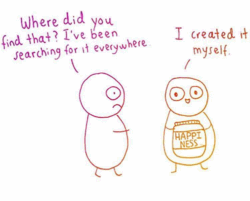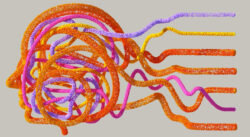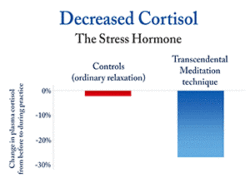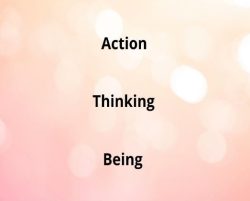June 2025
Dear Friend,
June brings Summer to the northern hemisphere. The Summer Solstice on June 21st—the longest day of the year 2025—offers us a vision of many hours of outdoor pleasures in the months ahead. Our June issue is dedicated to making the most of the sun-filled Summer.
- Last month’s blog written by women for women
- Articles
- How to get more enjoyment out of your Summertime sports
- The mind of an athlete
- TM and teeing up
- Q&A: Transcendental Meditation vs summer cat-naps
- What women say: Summer visits with grandchildren

Have you had a few minutes to read the articles posted on our blog in April? If you haven’t, the links are below. You can also visit our blog homepage at any time to use our search feature for topics as diverse as Let’s Talk About Relationships from 2014 and Why Am I Always So Tired? from 2020.
Meditation and the Ideally Tranquil Journey Into Motherhood
“A mother’s life is the expression of the creative power of nature.” – Maharishi Mahesh Yogi

Pregnancy, while often sweet and joyful, can also be a time of exhaustion and increased vulnerability. It is a delicate balancing act, to navigate the intricacies of your own self-care with the challenges of pregnancy. Women can suddenly face various risks that can affect their own health and well-being as well as that of their unborn child.
Countering ADHD: From Girlhood to Womanhood

Although symptoms of ADHD can manifest in girlhood and continue undiagnosed and untreated into and through a woman’s adult life, learning the Transcendental Meditation technique can effectively intervene at any time starting at age ten.
A piece published on Mar 06, 2025 on Newsweek.com stated that “ADHD affects roughly three percent of adults around the world. However, many of those with the condition remain undiagnosed, especially women….roughly 75 percent of women with the condition are undiagnosed.”

Get More out of Sports this Summer

Whether you’re heading to the beach or to the ball field, Transcendental Meditation can ramp up athletic activities by improving mental clarity and focus, and by reducing stress and anxiety. The TM technique also provides a deep level of relaxation. These benefits, verified by published research studies, can contribute to peak athletic performance and faster recovery.
Improved brain functioning improves mental processes including learning ability, organizing power, and memory. These support an athlete’s development of a more disciplined approach to training and competition.
Rest and Recovery
TM provides a level of rest deeper than sleep, enabling faster recovery from the effects of strenuous activity. This profound rest also releases stress that can be accumulated through intensive training, competition or injuries.
The Professionals
Professional athletes report that after learning the TM technique, they experienced added energy and efficiency, faster reaction time, improved mind-body coordination and increased emotional stability. They experience greater dynamism and vitality. It gives them a competitive edge. Reduced stress and anxiety from the uniquely deep relaxation during TM allow for greater self-confidence.
Evidence-based
Research specifically done on TM and athletic performance at the Universities of Texas and California indicated that TM improves reaction time and eye‐hand coordination. In India, government funded research found significant increases in basic athletic capabilities: endurance and straight‐ahead running speed.
The Mind of an Athlete

When the women’s squash team at Trinity College in Hartford, Connecticut, began practicing the Transcendental Meditation technique in 2010, they were hoping to make their team experience less stressful and more enjoyable. Little did they know that it would also lead them to the top of their game, finishing the 2010 season as number three in the nation, an amazing feat for a small school. In 2013 and 2014, the team captured the number one spot, edging out much larger schools like Harvard and Penn State.
It all started when Dr. Randy Lee, associate professor of psychology and assistant coach, who was already doing some work with the students to help them reduce stress and improve focus, read the research on TM.
“I’m a scientist and I wanted to see the data,” said Dr. Lee. “There were 700 research studies, and I looked a lot of them up. It occurred to me that TM, given what I’d seen in the research, might be a perfect mesh with what we were already doing,” he said.
The team, who practiced TM together as a group, noticed right away that it made them calmer. Team member Tehani Guruge from Shri Lanka said, “TM helped calm me down. I used to get really angry on court. After TM the anger went away.”
Head coach Wendy Bartlett also noticed the difference. “In general we’re certainly a calmer team,” she said. “We’ve had just as many challenges this year as we’ve had any other year, but we were able to handle them better.”
Some students even found that it helped them reach the “zone,” that coveted space of mental calm and peak performance that many top athletes experience.
“Before I wasn’t able to focus completely on the game and was distracted by external factors like the audience,” says “Nour Bahgat, a student-athlete from Egypt. “TM really helped me to get into the zone. Being in the zone is very important to an athlete because that’s the point where you can perform at your best level, so it was a great thing to learn.”
Alicia Rodriguez, a student from Mexico, reported a similar experience. “Whenever I meditated before a match, my body was so relaxed and my mind so calm. I was thinking on nothing. You already know how to play, so if your mind is calm your body will respond automatically.”

TM also helped the students with their studies. Emily Paton from Canada reported, “This year, especially, we got into a really good routine and schedule. It helped doing TM. Everyone said that after TM we’re so much more relieved and have more energy to go and do our studies afterwards. That’s not usually the case after playing hard.”
McCrea Davison from the US went on to say, “I notice that with the appropriate amount of study, every time I meditate before a major test I haven’t gotten below a 90. I think it’s because I’m more relaxed going into the test, and we learned in our class on the brain that when you’re stressed out your pre-frontal cortex shuts down so you’re not making good judgments and you can’t recall things as well.”
Research on people who practice the Transcendental Meditation technique shows that academic performance improves in students who practice TM. And in addition, reaction time is faster, energy increases, and the mind becomes calmer and more focused. All of these qualities come into play when performing sports.
Emily Lindon, a psychology major at Trinity College, studied the effects of the TM technique in promoting self-efficacy for her senior thesis. Self-efficacy is one’s belief in their ability to accomplish a certain task. According to research, someone who thinks more highly of herselftends to perform at a higher level.
“One of the groups that we studied was the Trinity College women’s squash team. We definitely found an increase in self-efficacy among the pre- and post-tests for those girls.”
Dr. Randy Lee thinks this makes sense. “The most important squash is played on the six-inch court between their ears,” he says. “And I think that is true for most sports. There is that mental peace. Our women are able to say, ‘OK, I can do this. I don’t need to worry about the scores, or what’s happening. I can make this happen.’ ”
With professional athletes like two-time World Series champion and Cy Young Award winner Barry Zito practicing the TM technique, it may just be a matter of time before other athletes discover its performance-enhancing and life-enhancing effects.
“With TM we have a whole new technique to begin to explore more to improve performance for almost any sport,” says Dr. Lee. “I can’t think of a sport I would exclude. It seems to me it can only bring positive outcomes.”
(reprinted from our August 2014 blog post)
TM and Teeing Up
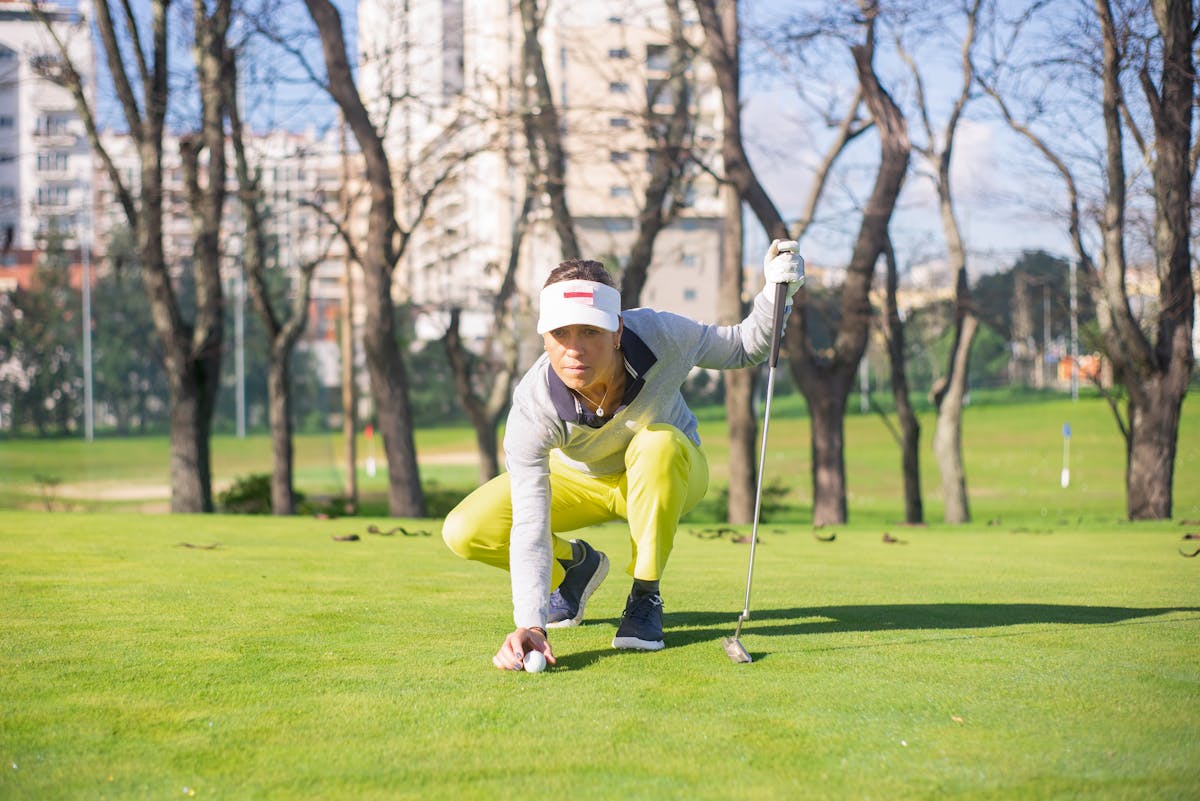
Teeing up this summer? Women are drawn to golf for a variety of reasons, including its challenging nature, the friendships and community it fosters, the opportunity to develop a skill, a chance to burn off calories, and a connection with nature.
A golf course is a place where you can relax and easily focus on the game. It’s a calm, peaceful, expansive place. No matter what your skill level, there is a chance for improvement and a sense of gratification when you do improve—every new hole and every new round are opportunities to reset.
To be good at a sport, you have to put the time in. You have to learn the fundamentals.
According to the book Quantum Golf, most people learn to play classical golf but there is also a way to play a more successful, fulfilling and enriched game called “quantum golf” with a foundation in classical golf. It involves a unique perspective on the player, her consciousness, and her relationship to the wholeness of reality, involving a unique grasp of principles called “frame of mind, flow, focus, feeling, and finding yourself.”
In spirituality, “quantum” often refers to the inter-connectedness and non-local nature of reality, drawing parallels between quantum mechanics and spiritual concepts like universal consciousness. This perspective suggests that our minds and the universe are intimately connected, and that changes in one part of the system can instantaneously affect other parts, regardless of distance. Regular practice of the Transcendental Meditation technique fosters the development of this level of reality and can structure a new, more natural and rewarding, level of skill in golf… what some call “being in the zone.”
We interviewed one woman golfer, Margaret Kempner Busch, who is an older adult now but began playing golf as a teenager. She enjoys the way the game naturally absorbs her attention in the present, getting her out of her intellect. Although she plays for the pleasure and fun of the game, sometimes she experiences being totally in the present moment, feeling infinitely present with 360-degree awareness.
Margaret prepares physically by wearing practice shoes and warming up before playing but she also has her secret recipe for a more enjoyable successful game: She meditates each morning before golfing, and finds that it increases her focus, mind-body coordination, comprehension, and self-esteem; in the late afternoon after playing, TM reduces her stress and fatigue.
She described her experience in more detail, “With TM, I have a restful awareness while playing and I feel more in control of the shot. I’m aware of the details of the stroke and placement of each shot,” she says. “It totally supports everything I do physically and mentally.”

Gaby Lopez is a two-time Olympian, three-time winner on the LPGA Tour and has been consistently ranked in the Top 50 in the world since her rookie season nine years ago.
She wrote:
Transcendental Meditation has helped me in my golf career, but mostly as a person. This type of meditation has helped me experience things that I can’t find anywhere else: a very internal connection full of nothing and everything at the same time. I’m very thankful for this practice.

Q: How Does TM Compare to a Summer Cat-Nap?

The term “cat nap” originates from how cats take a series of naps throughout the day and night. This idiosyncratic behavior is thought to help cats stay alert and agile, and that humans might take afternoon naps—a light sleep or doze—to reap similar benefits. Well, we could do that if we didn’t have the advantage of making a better choice, persuaded by scientific research results:
Research published in Electroencephalography and Clinical Neurophysiology showed that the Transcendental Meditation technique is highly successful in unfolding mental capacity. A large randomized controlled trial demonstrated that, in contrast to napping, during TM the subjects showed distinctive EEG changes, including slow, high amplitude alpha activity extending to anterior channels; theta activity different from sleep; rhythmic amplitude-moderated beta waves present over the whole scalp; and synchronization of anterior and posterior channels. This activity in the brain indicates that the TM technique is superior to napping in increasing creativity, practical intelligence, reducing anxiety, and more.
In a study published in the highly respected journal Intelligence, students were randomly assigned to practice TM or else to be in one of three comparison groups. These control groups involved alternatives to learning the TM technique: one group napped, a second practiced another meditation technique, and the third had school as usual with no intervention. The students who practiced the TM technique had highly significant improvements compared to students in the control groups in anxiety, fluid intelligence, decision making in complex situations, field independence, practical intelligence, and creativity.
Research published in Human Physiology showed that the TM technique, unlike resting with closed eyes, napping, or other meditation techniques, allows greater participation of the whole brain.
A groundbreaking Harvard Medical school study, published both in Science and Scientific American, measured level of rest based on oxygen consumption. The research found that during the TM practice, the body goes into a state of rest much faster and deeper than the rest that is usually achieved during sleep. Napping, relaxing and even sleep are not as successful in removing deeply rooted stress that accumulates during a lifetime and can cause or aggravate disease as is the Transcendental Meditation technique.


“My daily Transcendental Meditation sessions reduce stress, boost my stamina, and bring a deep sense of calm and well-being. Every summer, I love spending time with my daughters and their families—playing and connecting with my grandchildren. It’s always a highlight of the season. But keeping up with their boundless energy can be exhausting! That’s when the TM practice becomes especially vital, giving me the resilience I need to fully enjoy those precious moments.”
— SM, grandmom
Editor’s note: We’d love to hear your comments on the benefits you’ve received from the TM practice. And, with your permission, we’ll publish them here for other women to enjoy. Send your comment to info@tm-women.org





